重く湿った雪、いわゆる「シエラセメント」でのスキーは難しいです。粘着性があり密度が高く、間違ったギアだと疲れます。長いスキー?パウダーには最適ですが、この条件では重りを引きずっているように感じることがあります。そこで、短いスキーとSkiskatesがSnowfeet*のようなブランドから登場します。これらは軽量で操作が簡単で、この厳しい雪質に対応するよう設計されています。
ここでのポイントは次の通りです:
- 短いスキー=抵抗が少なく、エネルギーを節約できます。
- コンパクトな選択肢(38〜120cm)は持ち運びや収納、操作が簡単です。
- Snowfeet*のモデルは$150から$690まであり、すべてのスキーヤーに合うものを提供しています。
初心者でも経験豊富なスキーヤーでも、短いギアに切り替えることで重い雪の日がずっと楽しくなります。選択肢を分かりやすく解説しましょう。
湿った雪に最適なスキーはどれ?:質問とコメント
1. Snowfeet* Mini Ski Skates(38cm)
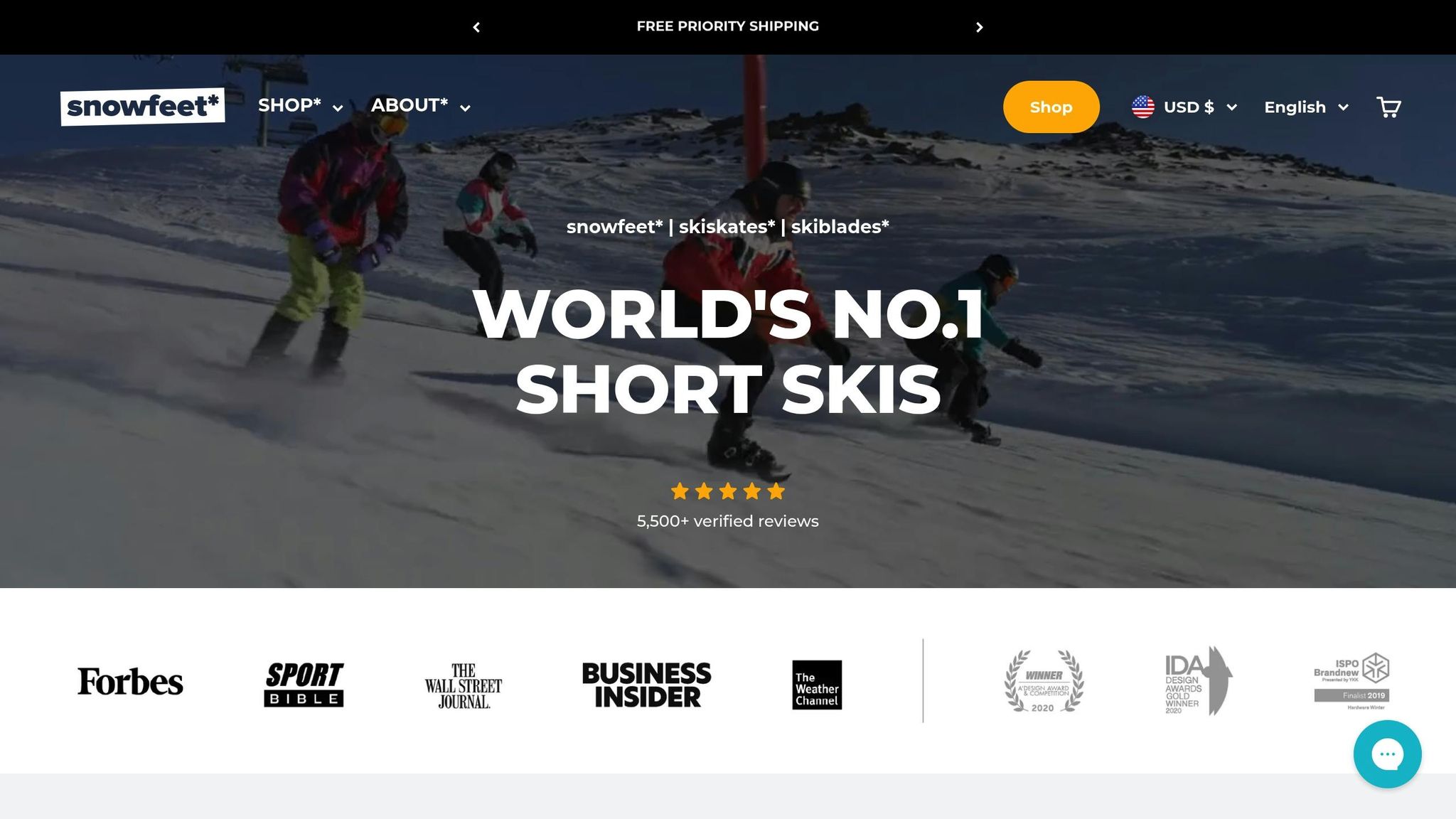
わずか15インチの長さのSnowfeet* Mini Ski Skatesは、シエラセメントをプロのように扱うために作られています。価格は$150からで、これらのコンパクトなSkiskatesは重く湿った雪でのスキーの考え方を一新しています。これらの小さなパワーハウスがなぜ際立った選択肢なのか、詳しく見ていきましょう。
湿った雪でのパフォーマンス
これらのSkiskatesは、濃くて湿った雪を簡単に切り裂くことに特化しています。RossignolやSalomonのような伝統的なスキーは、その大きさのために重い雪の中で引きずられることがありますが、38cmのMini Ski Skatesは接地面を最小限に抑えています。これにより抵抗が減り、どろどろの条件でも滑らかな滑走が可能です。
彼らの軽量設計はゲームチェンジャーです。ターンごとに必要な労力が少ないため、フルレングスのスキーと格闘するのに比べて疲れを感じにくくなります。つまり、滑走回数が増え、疲労が減り、ずっと楽しくなります。
操作性とコントロール
これらのSkiskatesの超短い長さは、特にSierra Cementのような難しい場所で驚異的なコントロールをもたらします。あなたの動きに即座に反応し、タイトで正確なターンを簡単にします。従来のスキーで強いられる広く大きなターンは忘れてください - これらのSkiskatesは木々の間を縫い、狭いスペースを通り抜け、瞬時に停止できます。ブーツと雪の直接的なつながりはまるでスケートボードに乗っているかのようで、変わりやすいコンディションでも自信を与えます。
携帯性と重量
携帯性に関しては、Mini Ski Skatesは無敵です。バックパックに収まるほど小さく、バックカントリーの旅やより良い雪を求めてハイキングする時に最適です。Sierra Cementの天気は予測が難しいため、重いギアを持ち歩かずにハイキングとスキーを簡単に切り替えられる点をきっと気に入るでしょう。
習得の難易度とアクセスのしやすさ
Mini Ski Skatesの最大の魅力の一つはそのシンプルさです。普通の冬用ブーツで使えるので、高価なスキーブーツを買う必要がありません。これにより、フルスキーセットアップにコミットせずに厳しい条件でスキーを試したい人に最適な選択肢となっています。
初心者は基本を簡単に習得できることを気に入り、経験豊富なスキーヤーは従来のスキーが過剰に感じる日でも手間のかからない代替手段を評価するでしょう。自然なスタンスと普段のブーツの感覚で、ギアと格闘することなく滑走を楽しめます。さらに、他のSnowfeet*モデルを試してみたい場合の良い出発点にもなります。
2. Snowfeet* PRO Ski Skates(50cm)
Snowfeet* PRO Ski Skatesは20インチ(50cm)で価格は199ドル、Mini Ski Skatesの上位モデルです。悪名高いSierra Cementのような重く湿った雪に挑むのに最適です。コンパクトなスキー・スケートと従来のスキーの間の絶妙なポイントで、機敏さとパフォーマンスの向上を兼ね備えています。
湿った雪でのパフォーマンス
これらの50cmのSkiskatesはバランスが命です。厚く重い雪の上でも滑るのに十分な接地面積を持ちながら、機敏さも保っています。K2やAtomicのような従来のスキーは湿った条件で重く感じることがありますが、これらのSkiskatesは雪の付着を減らし、スムーズな動きを維持するよう設計されています。
操作性とコントロール
PROモデルは調整可能なビンディングが付いており、さまざまなコンディションに対応可能です。長さ50cmはMiniバージョンよりも安定性が高く、それでもスケートボードのような素早い反応性を保っています。急な斜面、タイトなターン、変化に富んだ地形?問題なし - これらのSkiskatesは、難しい雪の中でも鋭い方向転換を簡単にします。
携帯性と重量
Miniバージョンより長いにもかかわらず、PRO Ski Skatesは依然として軽量で持ち運びが簡単です。バックカントリーをハイキングしたり、雪のパッチの間を移動したりするときでも、重さで負担になることはありません。
習得の難易度とアクセスのしやすさ
やや長めの長さがこれらのスケートにより寛容な感触を与え、従来のギアから移行するスキーヤーに最適です。通常の冬用ブーツに装着する場合でも、フルサイズのスキーから移行する場合でも、滑らかで直感的な体験を提供します。初心者は安定性を評価し、熟練スキーヤーは重く湿った雪をナビゲートするためのコントロールと機敏さの組み合わせを気に入るでしょう。彼らは完璧な中間点であり、機敏でありながら厳しい条件にも耐えうる安定性を持っています。
3. Snowfeet* Skiskates(44cm)
Snowfeet* Skiskatesは17インチ(44cm)で価格は$390からで、厳しいシエラセメントの条件に挑むためのトップクラスの選択肢です。これらのSkiskatesはwood core constructionを特徴としており、MiniやPROモデルを凌駕する要素です。プロレベルのパフォーマンスを目指して設計されており、他の選択肢が苦戦する湿った雪の中で輝きます。これらのSkiskatesがゲームチェンジャーである理由を詳しく見てみましょう。
湿った雪でのパフォーマンス
wood core constructionは重く湿った雪を扱うための秘密兵器です。RossignolやHeadのような伝統的なスキーは、こうした条件下で鈍く重く感じることがありますが、これらのSkiskatesは卓越しています。木製コアと44cmの長さの組み合わせが雪の付着を最小限に抑え、柔軟な乗り心地を提供し、滑走中の雪の密度変化にスムーズに適応します。
44cmという長さは完璧なバランスを実現しています。重い雪の上を浮かぶのに十分な長さでありながら、鋭いエッジの切り替えを維持できる短さでもあります。つまり、雪が粘り気を帯びて難しくなっても、コントロールを保てるのです。
操作性とコントロール
タイトなターンや素早い調整に関しては、これらのSkiskatesは群を抜いています。wood core constructionがエッジコントロールを強化し、氷のパッチや密集した樹林帯のような難しい地形のナビゲートを容易にします。軽量なMiniやPROモデルと比べて、これらのSkiskatesは重い雪の中でより高い精度と安定性を提供します。
障害物をかわしたり狭いトレイルをカービングしたりするとき、44cmの長さは稲妻のような素早い機敏さで応えます。濡れた雪の中では、ひとつひとつのターンが重要で、この種のコントロールがスムーズな滑走と立ち往生の差を生み出します。
携帯性と重量
これらのSkiskatesはプレミアムな作りにもかかわらず、非常に携帯性に優れています。コンパクトなサイズなので、ハイキングコースで持ち運んだり、分解せずに車のトランクに放り込むのも簡単です。複数の場所でPOWDERを追いかけるなら、この利便性は大きなプラスです。
習得の難易度とアクセスのしやすさ
彼らのスキーのような感触のおかげで、これらのスキスケートは伝統的なスキーに慣れた誰にとっても簡単に習得できます。SalomonやDynastarのようなブランドに馴染みがあれば、これらのスキスケートへの移行は自然で直感的に感じられるでしょう。短い長さはさらなる多用途性を提供し、整備された斜面と予測不可能な地形の両方に最適です。
$390の価格は高品質な素材と職人技を反映していますが、それは価値ある投資です。これらのスキスケートは、特に条件が厳しくなるときに比類なきパフォーマンスと適応性を発揮します。長いスキーのかさばりなしで湿った雪を攻略したい経験豊富なスキーヤーにとって、素晴らしい選択肢です。
4. Snowfeet* Skiblades(65 cm)
Snowfeet* Skiblades(65 cm / 26インチ)は、$450からの価格で、スキスケートの素早さと伝統的な長いスキーの安定性の中間を提供します。シエラセメントのような重く湿った雪のために特別に作られたこれらのスキーブレードは、機敏さと安定性を兼ね備え、さまざまな条件に対応できる多用途な選択肢です。65 cmの長さがパフォーマンスをどのように向上させるか、詳しく見てみましょう。
湿った雪でのパフォーマンス
65 cmのデザインはより大きな表面積を提供し、体重をより均等に分散するのに役立ちます。これにより、朝の硬い雪から午後のシャバ雪へと変わる中でも安定を保てます。K2やAtomicのような標準的なスキーとは異なり、これらのスキーブレードは伝統的なスキーが湿った条件で性能を落とす場合でも反応性の高い感触を維持するよう作られています。
操作性とコントロール
これらのスキーブレードのやや長めの長さは、正確なエッジコントロールと素早いターンに十分な機敏さの完璧なバランスを実現します。Snowfeetの44 cmスキスケートと比べて、長さの追加により安定性が大幅に向上し、難しい地形でのカービングがよりコントロールされ自信を持って行えます。狭い場所を通り抜ける時も変化する雪を攻略する時も、これらのスキーブレードは安定した操作性を提供します。
携帯性と重量
65 cmでも、これらのスキーブレードはコンパクトで持ち運びが簡単です。車やバックパックにすっきり収まり、伝統的なスキーが面倒になるバックカントリーの冒険に実用的な選択肢となります。その携帯性により、長いスキーのかさばりに邪魔されることなく自由に動けます。
習得の難易度とアクセスのしやすさ
伝統的なギアから移行するスキーヤーにとって、65 cmのスキーブレードは馴染みやすく洗練された体験を提供します。特に湿った雪の難しい状況で疲労を軽減するよう設計されており、カジュアルなスキーヤーから上級者まで幅広く適しています。$450からの価格は、高品質な素材と緻密なデザインを反映しており、厳しい雪の条件に頻繁に対応する方にとって賢い選択です。
5. Snowfeet* Skiblades(99 cm)
Snowfeet* Skiblades(99 cm / 39インチ)は490ドルからで、携帯性、使いやすさ、多用途性というSnowfeet*の特徴を最大限に活かしつつ、重く湿った雪でのパフォーマンスを向上させるために表面積を大きくしています。このモデルは65 cmスキーブレードの成功を基にしており、従来のスキーの長さに慣れたスキーヤーにも扱いやすい長さの選択肢を提供します。
湿った雪でのパフォーマンス
99 cmのスキーブレードは、密度の高い湿った雪の上で体重をより均等に分散させるために、追加の表面積を持つよう設計されています。これにより、シャーベット状や厳しい条件でも信頼できる浮力を提供します。硬い雪や粘着性の重い雪のどちらに対しても、長さの追加が一貫した滑りとスムーズさを保ちます。
操作性とコントロール
99 cmはSnowfeet*ラインナップで最も長いスキーブレードですが、通常160〜180 cmの標準スキーよりはるかに短いです。この短い長さにより、エッジからエッジへの素早い切り替えと機敏な操作が可能になり、多様な地形に対応するためのコントロールを提供します。安定性と機動性のバランスが良く、重い雪を自信を持って滑るのに最適な選択肢です。
携帯性と重量
長さが増しても、99 cmのスキーブレードは持ち運びが簡単です。車のトランクに快適に収まり、複数日間の旅行にも最適です。軽量設計により、持ち運びや設置の手間も少なく、エネルギーをゲレンデでの滑走に温存できます。
習得の難易度とアクセスのしやすさ
従来のスキーから移行する人にとって、これらのスキーブレードはスムーズな調整を提供します。馴染みやすい感覚ながら、より高いコントロール性と疲労軽減を実現し、より機敏なセットアップを求めるスキーヤーにとって実用的な選択肢です。490ドルからの価格設定で、重く湿った雪に頻繁に直面する中級から上級者向けに、高品質で適応力のあるギアとして作られています。
sbb-itb-17ade95
6. Snowfeet* POWDER Skiboards(99 cm)
Snowfeet* POWDER Skiboards(99 cm / 39インチ)は、490ドルからの価格で、パウダーや密度の高い湿った雪、例えば有名な重いシエラセメントに対応するために作られています。これらのスキーボードは、特に長いスキーが苦戦しがちな難しい雪の条件で効果的に機能するギアを作るというSnowfeet*のアプローチの際立った例です。
湿った雪でのパフォーマンス
これらのスキーボードは、重く湿った雪を想定して設計されています。幅広の形状と慎重に計算された表面積が大きな違いを生み、体重を均等に分散させるのに役立ちます。これにより、沈み込みや抵抗が減り、まるで接着剤のように感じる雪でも、全体的に滑らかなライドが実現します。
伝統的なスキーがこれらの条件で扱いにくく鈍重に感じるのとは異なり、99cmのPOWDER skiboardsは反応が良く操作しやすいままです。短い長さは抵抗も減らし、疲れずにスムーズに動き続けられます。
操作性とコントロール
これらのskiboardsのコンパクトなサイズは、狭い場所や変化に富んだ地形で優位性をもたらします。99cmで、170〜180cmにもなる伝統的なスキーよりもはるかに扱いやすく、重い雪の中で扱いにくさを感じることがありません。長いスキーはエッジに引っかかったり、鋭いターンがぎこちなく感じたりしますが、POWDER skiboardsは素早くピボットし、正確にエッジをグリップできます。狭いトレイルや難しい雪をナビゲートするときでも、これらのskiboardsはあなたをコントロール下に保ちます。
携帯性と重量
これらのskiboardsの利点の一つは、持ち運びが非常に簡単なことです。わずか99cmで、ルーフラックや特別なキャリアなしでほとんどの車に収まります。この携帯性は、長いスキーを持ち運ぶのが面倒なバックカントリーの冒険やハイキングでのゲームチェンジャーです。また、ロッジでの保管やチェアリフトやゴンドラでの取り扱いも楽々です。Snowfeet*はパフォーマンスとともに利便性を明確に優先しており、伝統的なスキーのかさばりにうんざりしている人にとって堅実な選択肢となっています。
ユーザーフレンドリーでアクセスしやすい
これらのskiboardsは高性能なだけでなく、初心者にも親しみやすいです。短い長さが威圧感を減らし、新しいユーザーが厳しい雪の中で自信をつけるのを助けます。多くの人が、これらのskiboardsでスキルをより早く向上させ、長いスキーの習得に伴う苦労を避けられると感じています。
490ドルからのスタート価格で、POWDER skiboardsは、より高価で重く湿った雪にうまく対応できないことが多い伝統的なパウダースキーに対する強力な代替手段を提供します。パフォーマンス、利便性、価値のバランスを求めているなら、これらのskiboardsは検討に値します。
7. Snowfeet* Short Skis (120 cm)
Snowfeet*は、シエラセメントのような重く湿った雪に特化して設計されたShort Skisで、常に枠を超えた発想を続けています。120cm(47インチ)で価格は690ドル、これらはSnowfeet*のラインナップで最も長いスキーですが、伝統的なスキーよりはるかに短いままです。この独特のデザインは、従来のスキーとSnowfeet*のコンパクトで革新的なアプローチのギャップを埋め、厳しい雪の条件に対する実用的な解決策を提供します。
湿った雪でのパフォーマンス
120cmの長さは、伝統的なスキーでよく感じる抵抗なしに、密で湿った雪を切り裂くのにちょうど良いバランスを実現しています。重い雪の上を浮かぶのに十分な表面積を持ちながら、条件が粘り気を帯びたときでも軽く扱いやすいままです。長いスキーのように湿った雪の中で重りを引きずっているように感じることはなく、雪がセメントのように感じてもこれらの短いスキーは反応性を保ちます。
短いデザインは雪と接触するスキーの面積を減らし、重い雪でのスキーを疲れさせる吸引のような効果を軽減します。その結果、エネルギーを節約し、厳しい条件でもより楽しく滑れます。さらに、長いスキーにありがちなかさばる感覚なしにしっかりしたエッジグリップを維持し、より滑らかでコントロールしやすいライドを実現します。
操作性とコントロール
これらのスキーは機敏さと安定性のバランスが優れています。120cmの長さは伝統的なスキーよりもはるかに操作しやすく、それでいてより馴染みのあるスキー体験を好む人にも十分な安定感があります。これは、木々の間や混雑した斜面のような狭い場所で、湿った雪が予測できないコンディションを作り出す場合に最適です。素早いターンと正確なエッジコントロールが簡単で、170~180cmの伝統的なスキーのように重く感じることはありません。
ショートスキーなら、濡れた部分を自信を持ってカービングし、ターンごとに変わるコンディションでも軌道を外れません。コントロールと動きやすさの両方を求めるスキーヤーにとって、これはゲームチェンジャーです。
携帯性と重量
Snowfeet*のラインナップの中で最も長いとはいえ、これらのショートスキーは伝統的なスキーよりもはるかに持ち運びが簡単です。車に収まりやすく、チェアリフトでの持ち運びも楽で、収納スペースも少なくて済みます。この便利さは、シエラセメントが一般的で重いギアを運ぶのが面倒な春スキーの時期に特に役立ちます。
短い長さは軽さも意味し、バックカントリーの冒険や未踏のPOWDERに到達するハイキングにも最適です。伝統的なスキーのかさばりなしでしっかりしたパフォーマンスを求めるなら、これらは理想的です。
習得の難易度とアクセスのしやすさ
伝統的なギアから移行するスキーヤーや、難しい条件でスキルを向上させたい方には、120cmのショートスキーが素晴らしい選択肢です。短い長さが学習プロセスを加速させ、特に重く湿った雪の中で効果的です。長くて扱いにくいスキーで苦労するよりも、自信をつけて技術を早く磨けます。
690ドルで、これらのスキーはSnowfeet*のラインナップの中でプレミアムな選択肢ですが、湿った雪で効果的に機能しないかもしれない高級な伝統的スキーと比べても十分に競えます。挑戦的なコンディションで信頼でき、持ち運びが簡単で楽しいオプションを求めるスキーヤーには、これらのショートスキーは注目に値します。
8. ロングスキー(例:Blizzard Black Pearl 94、Volkl Blaze 94、Stöckli Stormrider 95)
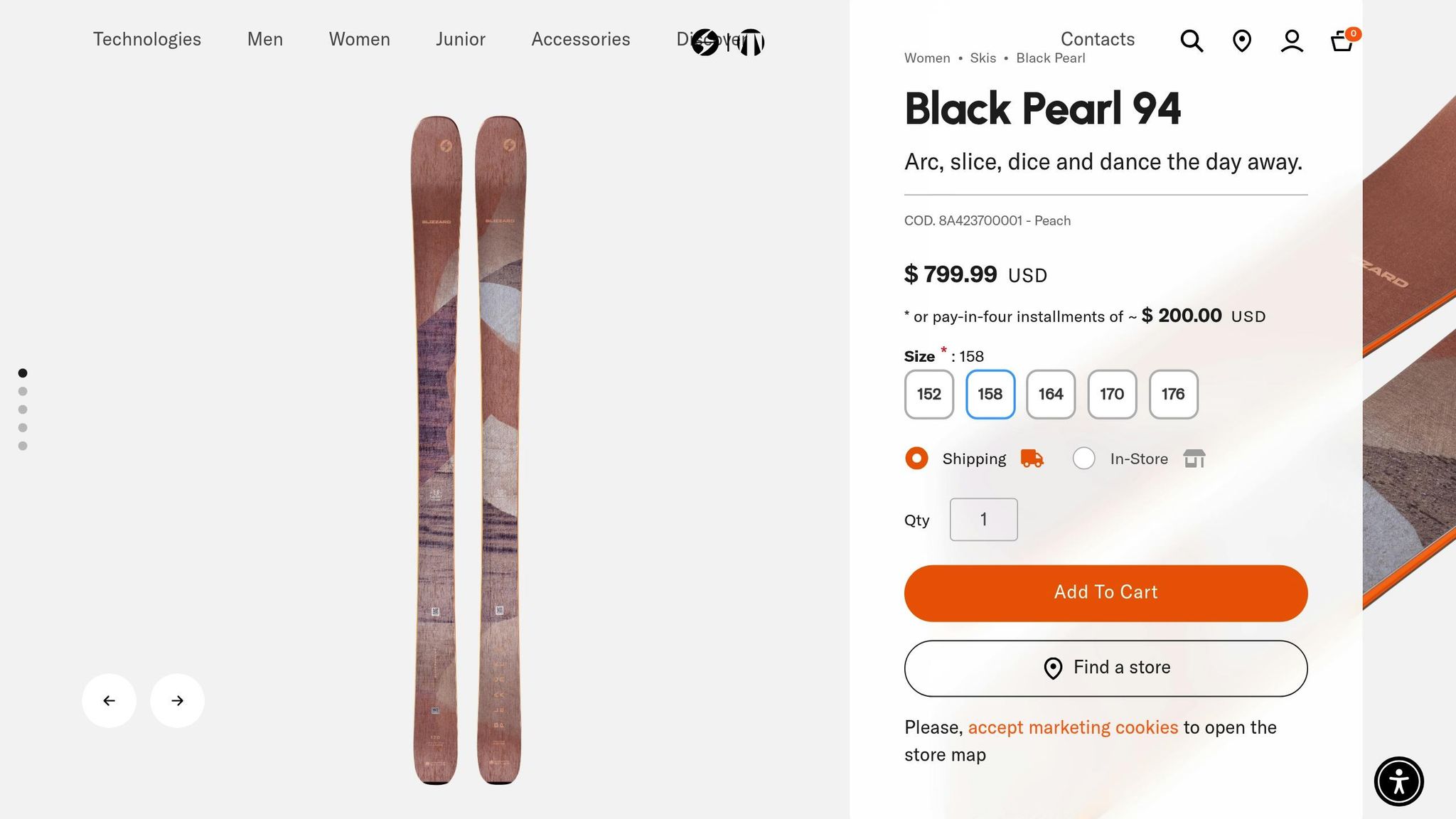
Blizzard Black Pearl 94、Volkl Blaze 94、Stöckli Stormrider 95のようなロングスキーは、長年スキーヤーに愛用されてきました。整備されたトレイルで安定性と滑らかなパフォーマンスを発揮します。しかし、重く湿った雪、つまりSierra Cementのような条件では、その設計上苦戦することがあります。
湿った雪でのパフォーマンス
重く湿った雪は独自の課題をもたらします。ロングスキーは表面積が大きいため抵抗が増えがちです。雪が底に付着し、ターンが鈍くなり、コントロールを維持するためにより多くの努力が必要になります。これにより、思った以上に疲れてしまうことがあります。
操作性とコントロール
ロングスキーでは、より広く遅いターンになります。これは広い整備されたコースでは問題ありませんが、厚く湿った雪のような難しい条件では素早い調整が難しくなります。この反応の鈍さが、予期せぬ地形のナビゲートを少し厄介にします。
携帯性と重量
山を離れると、ロングスキーのサイズは厄介です。収納にかさばり、持ち運びも不便で、リフトや混雑したゴンドラのような狭い空間を移動する際には特に不便です。
習得の難易度とアクセスのしやすさ
技術を磨いている途中の方にとって、ロングスキーは密で湿った雪ではやや扱いにくいことがあります。より正確な操作と努力が求められ、経験の浅いスキーヤーには挑戦となるでしょう。
ロングスキーは整備されたコースでは力を発揮しますが、重く湿った雪では扱いやすいとは言えません。ここで、Snowfeet* のようなコンパクトな代替品が真価を発揮し、厳しい条件でもより機敏で使いやすい体験を提供します。
長所と短所
重く湿った雪に適したギアを選ぶ際は、トレードオフのバランスが重要です。Snowfeet* 製品は、表面積を減らし優れた機動性を持つことで、Sierra Cementスタイルの条件に特化して設計されています。
Snowfeet* は、そのコンパクトで低抵抗のデザインにより、これらの厳しい条件で輝きを放ちます。超コンパクトな38cmのMini Ski Skatesから120cmのShort Skisまでの長さがあり、湿った雪が付着しにくい表面積を最小限に抑え、滑走をスムーズで軽快に保ちます。
対照的に、Blizzard、Volkl、Stöckliなどのブランドの従来のロングスキーは、湿った雪では苦戦することが多いです。表面積が大きいため雪がたまりやすく、スキーが重く疲れやすく感じられます。さらに、ロングスキーはかさばるため持ち運びが面倒ですが、Snowfeet* ギアならその心配はありません。
以下の表は、Snowfeet* が従来のロングスキーと主要なパフォーマンス要素でどのように比較されるかを示しています。
| 製品カテゴリ | 湿った雪での性能 | 機敏さ | 携帯性 | 習得の難易度 | 価格帯 |
|---|---|---|---|---|---|
| Snowfeet* ミニ スキー Skates (38 cm) | 優秀 | 優秀 | バックパック | とても簡単 | $150+ |
| Snowfeet* PRO スキー Skates (50 cm) | 優秀 | 優秀 | バックパック | 簡単 | $199 |
| Snowfeet* Skiskates (44 cm) | 優秀 | 優秀 | バックパック | 簡単 | $390+ |
| Snowfeet* スキーブレード (65 cm) | とても良い | とても良い | コンパクト | 中程度 | $450+ |
| Snowfeet* スキーブレード (99 cm) | とても良い | 良い | コンパクト | 中程度 | $490+ |
| Snowfeet* POWDER スキーボード (99 cm) | 優秀 | 良い | コンパクト | 中程度 | $490+ |
| Snowfeet* ショートスキー(120 cm) | 良い | 良い | 標準 | 中程度 | $690 |
| 伝統的な長いスキー | 劣る | 制限されている | かさばる | 挑戦的 | $400–800+ |
Snowfeet* のギアは湿った雪、機敏さ、携帯性で明らかに優れており、これらの条件で強力な候補となります。しかし、その代償として整備されたコースでの高速安定性は犠牲になります。理想的な雪の状態では長いスキーの方が高速での滑走が滑らかですが、その利点は重く湿った雪に直面すると薄れます。
Snowfeet* のもう一つの大きな利点は短い学習曲線です。中級スキーヤーは大きすぎる装備を扱うフラストレーションなしに、湿った雪のテクニックにすぐに適応できます。さらに収納や輸送の便利さも加わり、スキーラックや追加の保護具は不要です。だからこそ、Snowfeet* は重く湿った雪に挑む実用的で楽しい選択肢であることがわかります。
伝統的な長いスキーは完璧に整備されたトレイルでの役割を持ち続けていますが、Snowfeet* のギアは重く湿った雪の独特な挑戦に特化して作られています。セットアップを簡素化し、ゲレンデでの時間を最大化したい人にとって賢い選択肢です。
結論
重く湿った雪、しばしばシエラセメントと呼ばれる雪に挑むには、抵抗を減らししっかりとしたコントロールを可能にするギアが必要です。ここで Snowfeet* が輝き、これらの厳しい条件で伝統的な長いスキーを凌駕するデザインを提供します。
Snowfeet* のギアは扱いやすいだけでなく、ほとんどの長いスキーよりも予算に優しいです。初心者や中級者のスキーヤーには、Mini Ski Skates や PRO Ski Skates が素晴らしい選択肢です。使いやすく、コストパフォーマンスも抜群です。より経験豊富なスキーヤーで精度とパフォーマンスを求めるなら、Skiblades や POWDER Skiboards をチェックする価値があります。伝統的なスキーのかさばりや面倒さなしに優れたコントロールを提供します。
スキルレベルに関係なく、Snowfeet* は重い雪の中でのスキーを戦いではなく楽しみに変えます。エネルギーを節約し、ギアに苦労することなく、毎回の滑走を最大限に楽しめます。
よくある質問
なぜSnowfeet* Mini Ski Skatesは、シエラセメントのような重く湿った雪に対して従来のスキーより優れているのでしょうか?
Snowfeet* Mini Ski Skatesは、シエラセメントのような重く湿った雪を扱う際のゲームチェンジャーです。コンパクトなサイズが抵抗を減らし、密集したシャーベット状の雪でもコントロールとスピードを向上させます。従来の長いスキーがこの種の雪でかさばったり沈んだりするのに対し、Snowfeet*はより軽く機敏な代替手段を提供します。
ガラス繊維強化素材で作られたこれらのミニスキースケートは、軽量で頑丈です。デザインにより操作が非常に簡単で、湿って重い雪の難しさに対処する際に大きな利点となります。さらに、かさばるスキーよりもずっと携帯しやすく扱いやすいです。シエラセメントを滑ったり狭い場所を縫うように滑ったりする際も、Snowfeet*は滑走をよりスムーズで楽しいものにします。
Snowfeet* SkibladesとSkiboardsは、重く湿った雪で機敏さと安定性をどのように両立し、従来のスキーから乗り換えるスキーヤーにとって良い選択肢なのでしょうか?
Snowfeet* SkibladesとSkiboardsは、機敏さとコントロールの完璧なバランスを提供するよう設計されており、シエラセメントのような重い雪でも扱いやすい優れた選択肢です。約39インチ(99cm)のコンパクトな長さで、素早く鋭いターンが可能です。同時に接地面積が大きいため、スピードを出しても安定してコントロールできます。この組み合わせが、密集した雪や混合地形を自信を持って滑るための定番となっています。
従来の長いスキーから乗り換えるなら、Snowfeet* Skiskatesは確かな選択です。習得が簡単で多用途、長いスキーに似た感覚を持ちながら、軽量で持ち運びやすく、操作性も抜群です。これにより学習曲線が緩やかになり、長いスキーがかさばったり扱いにくい雪の条件でも滑りがずっと楽しくなります。
Snowfeet*製品を重く湿った雪でも良好に機能させるための最適なケア方法は?
Snowfeet*ギアを重く湿った雪に対応させるには、少しの手入れが大きな効果を生みます。使用後は必ず損傷がないかチェックし、エッジを完全に乾かしてください。これで錆を防げます。定期的にベースにワックスを塗るのも賢い方法です。雪の付着を減らし、滑走をスムーズに保ちます。
一日の滑りが終わったら、涼しく乾燥した場所に保管して不要な摩耗を避けましょう。これらの簡単なメンテナンス習慣が、Snowfeet*をシエラセメントのような厳しい条件でも楽に扱えるようにします。

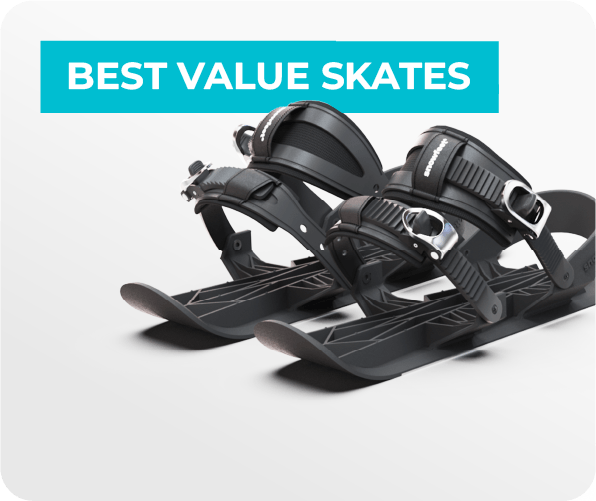



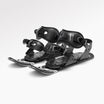
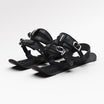
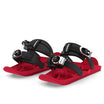
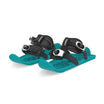

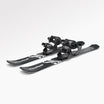

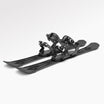
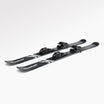






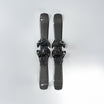
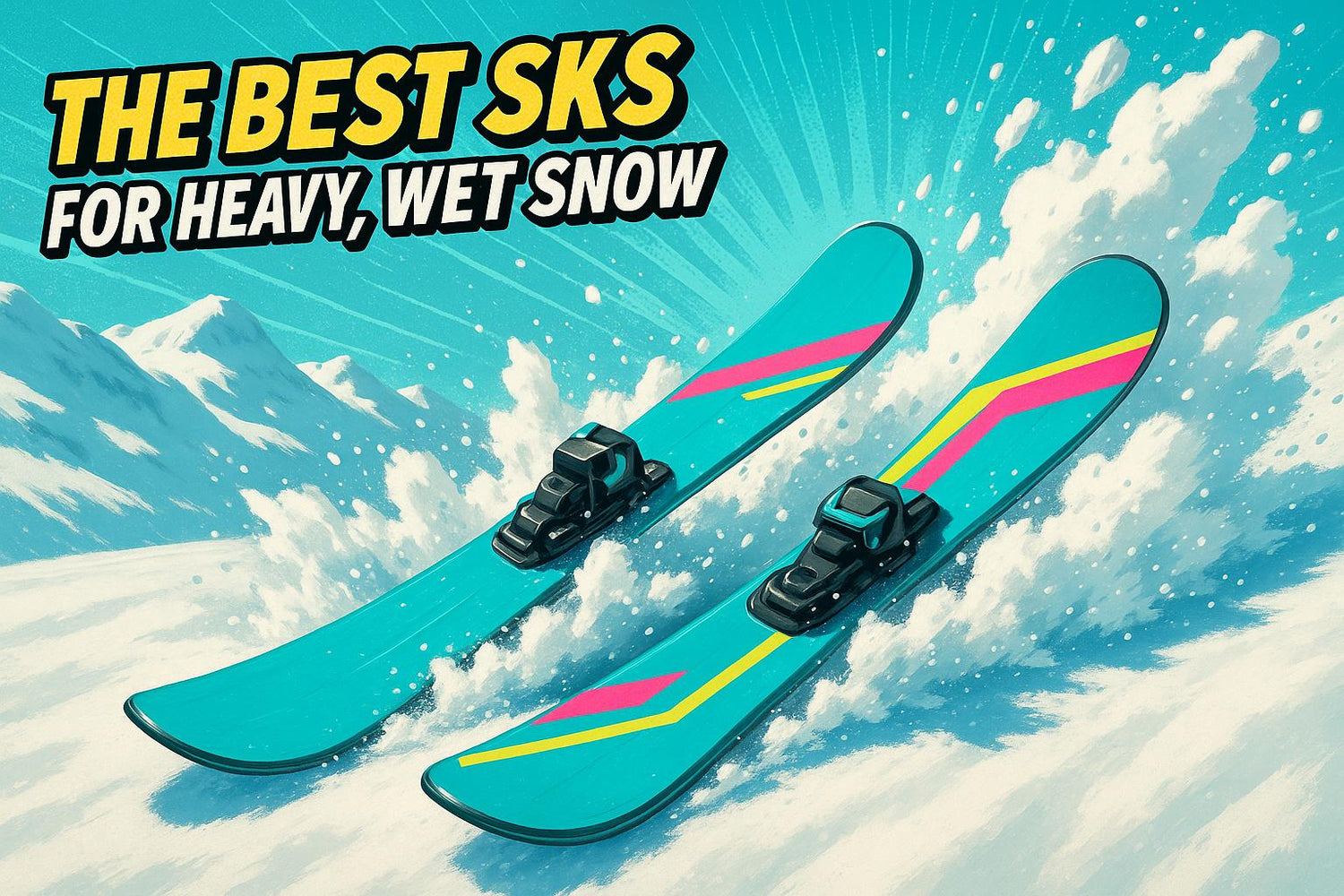
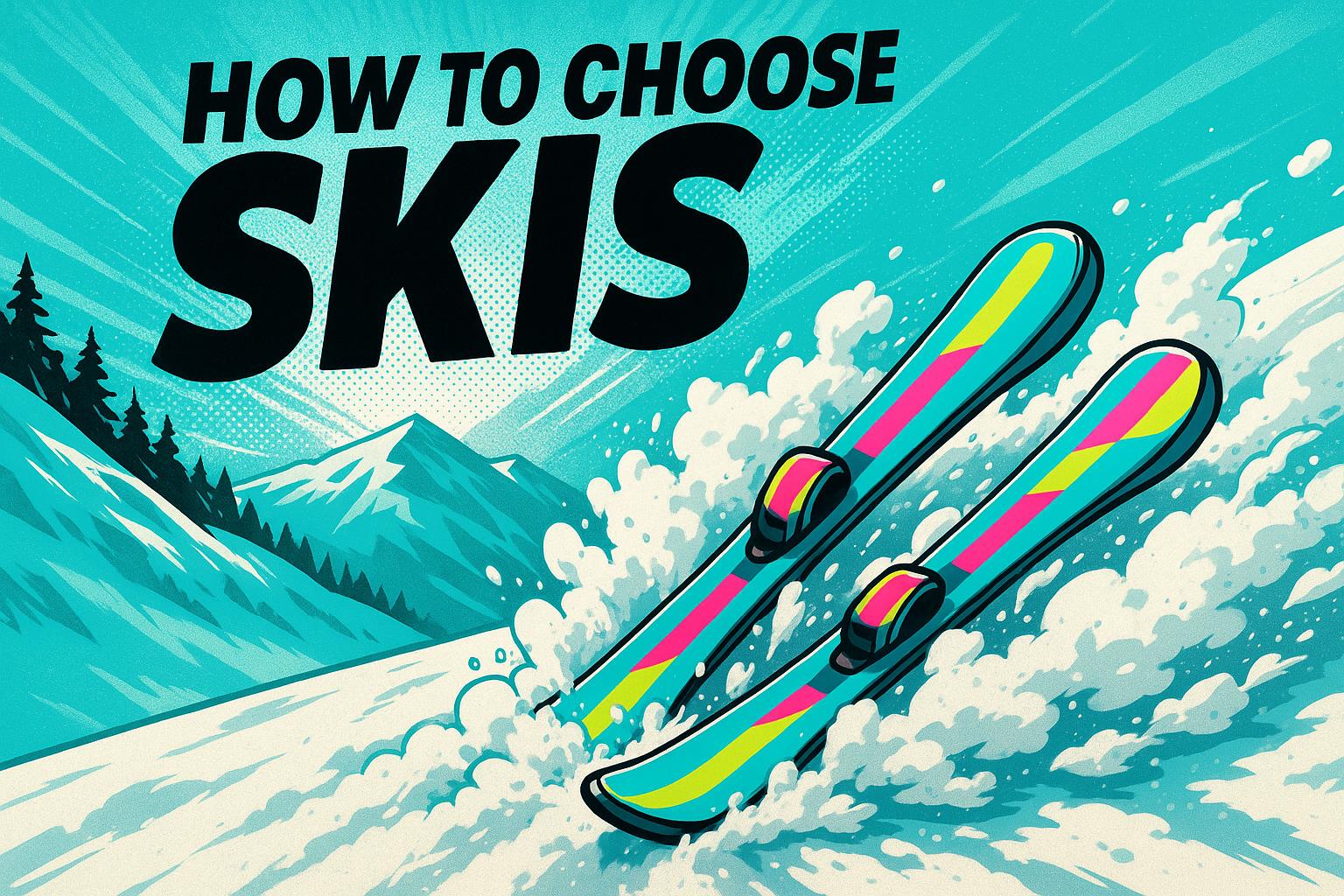
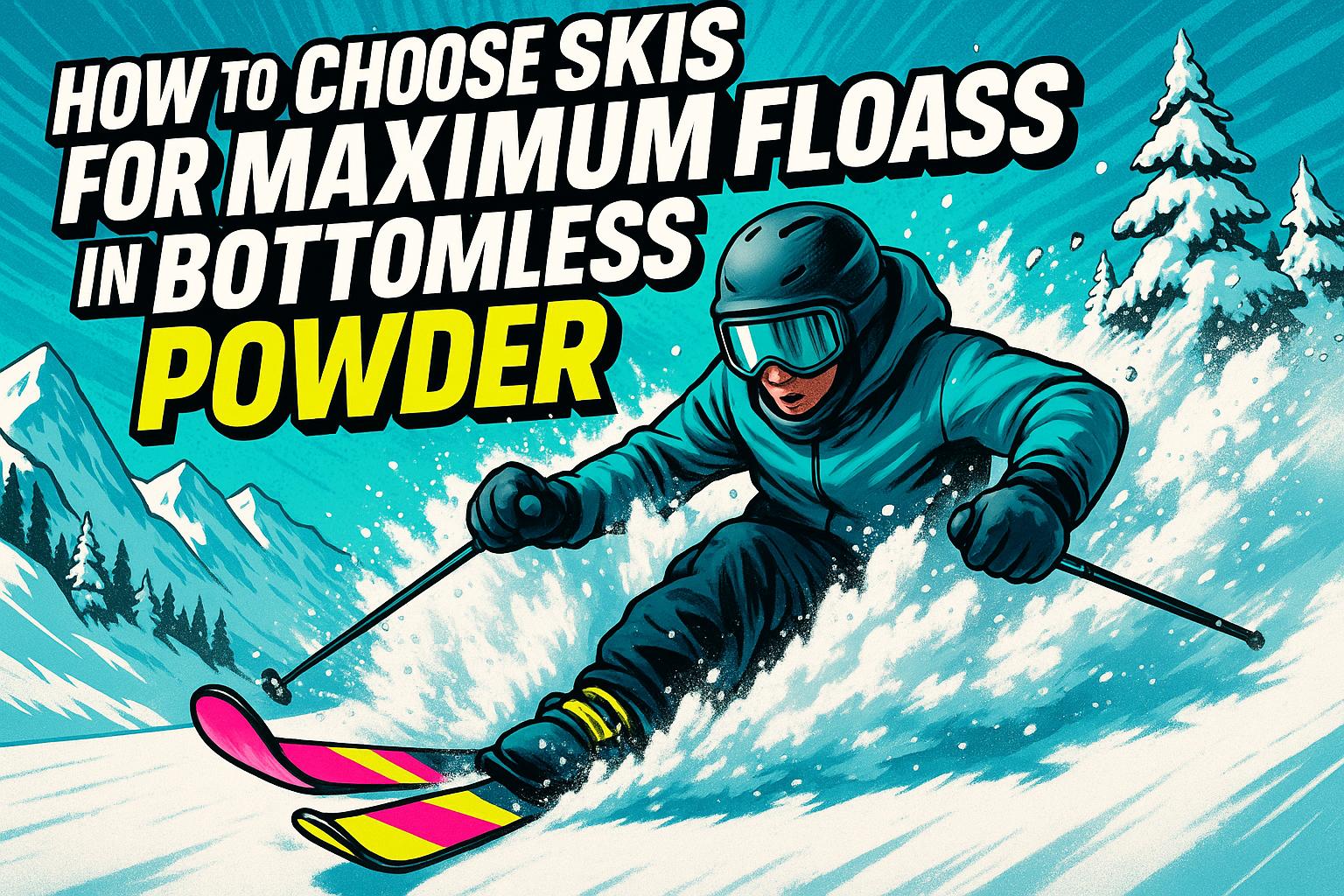
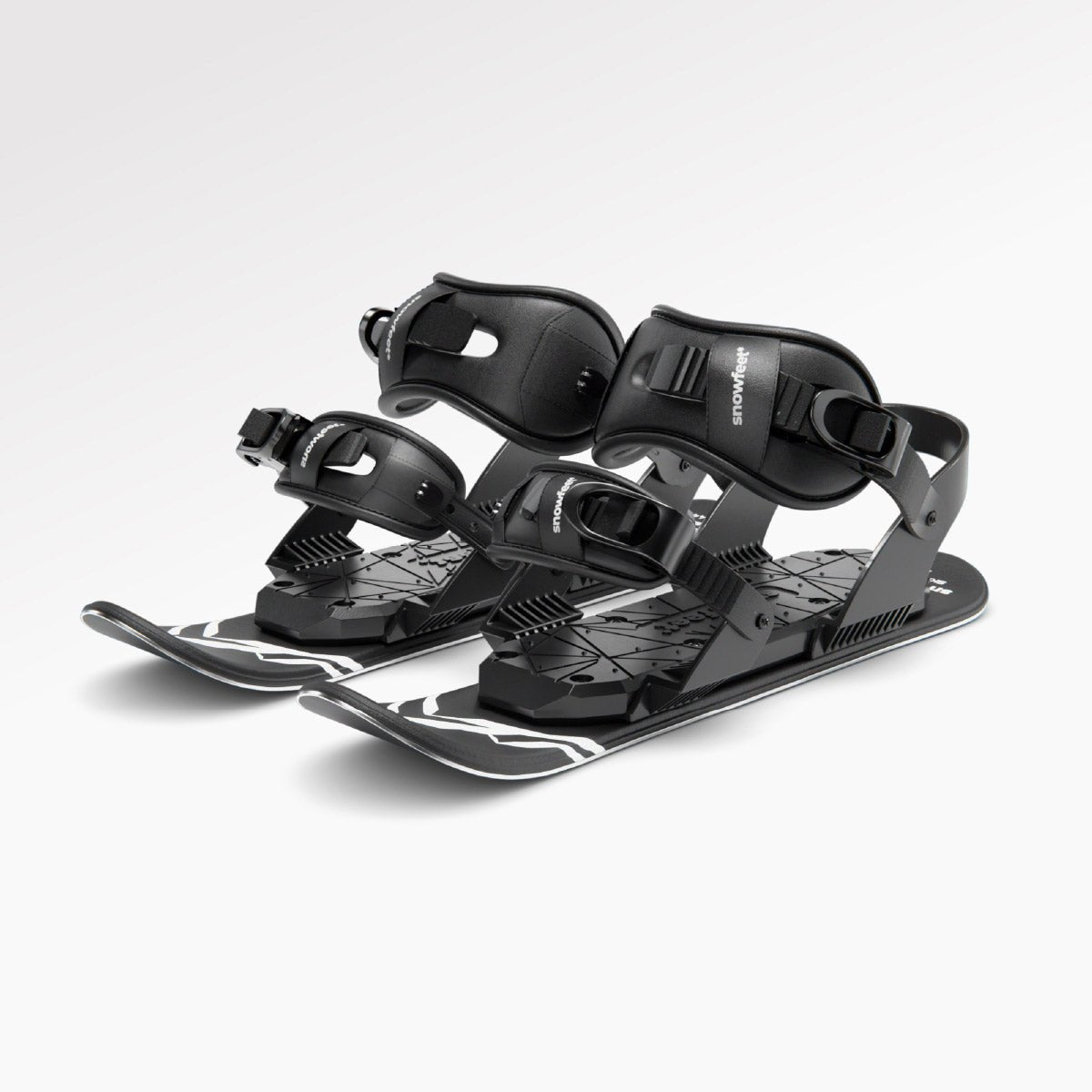
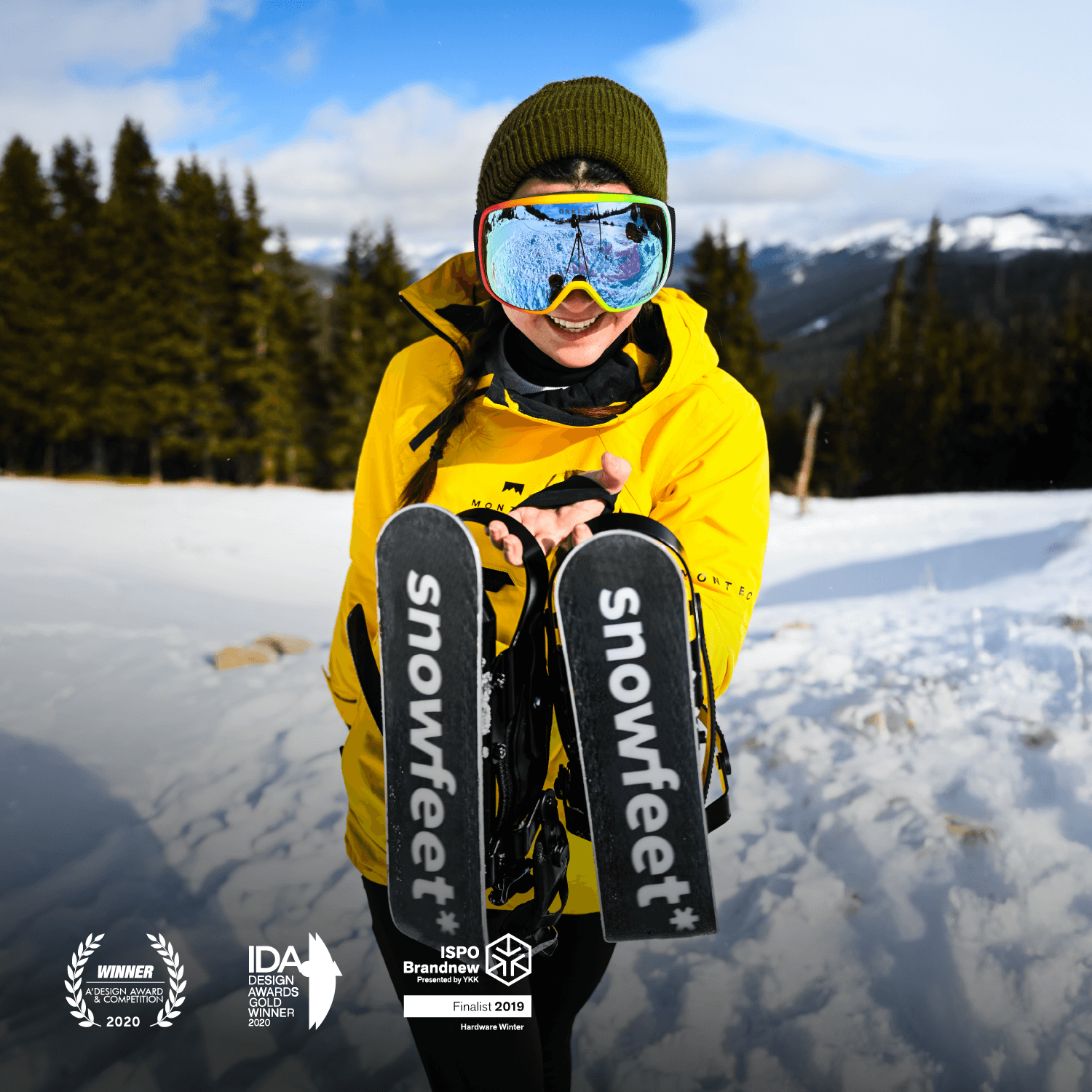
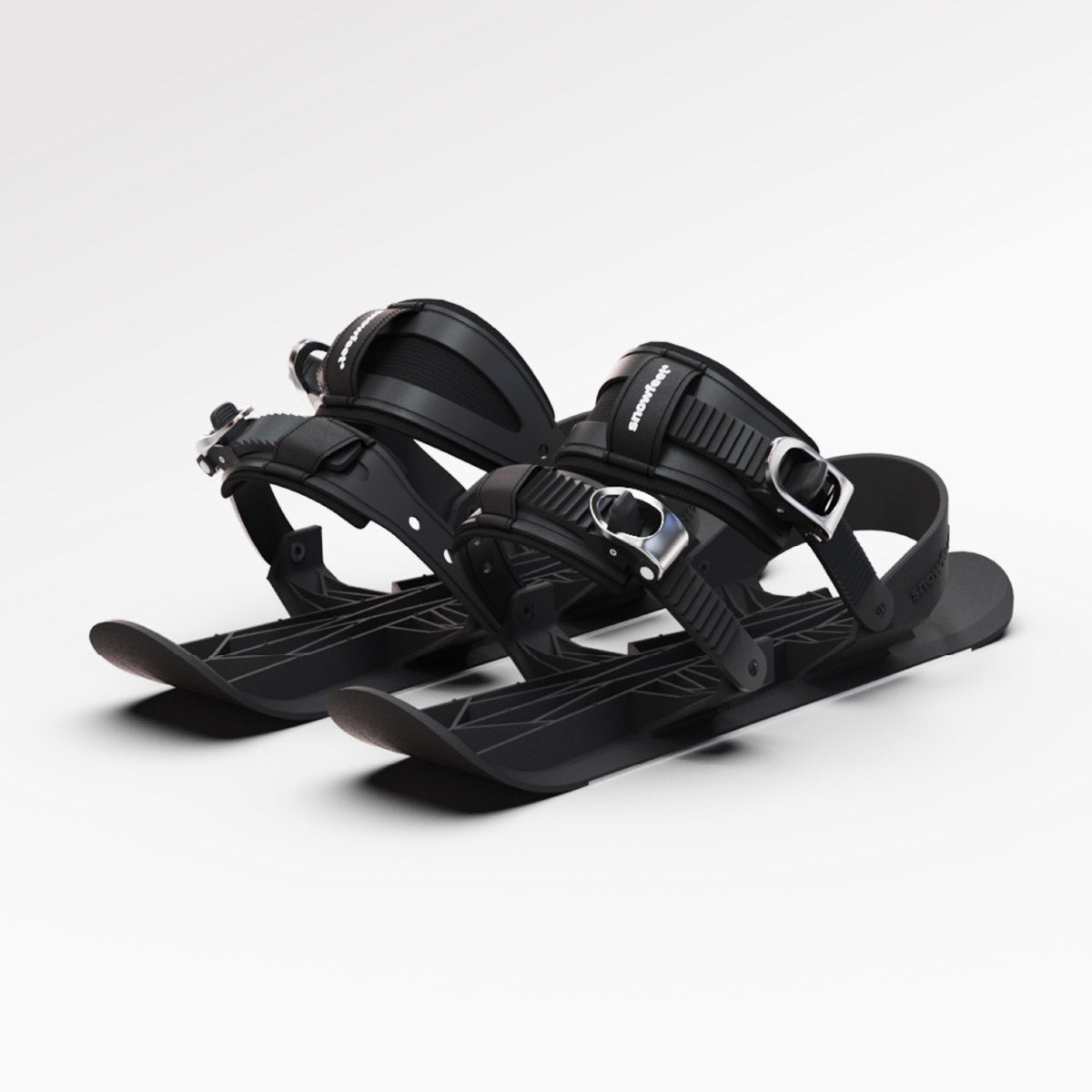

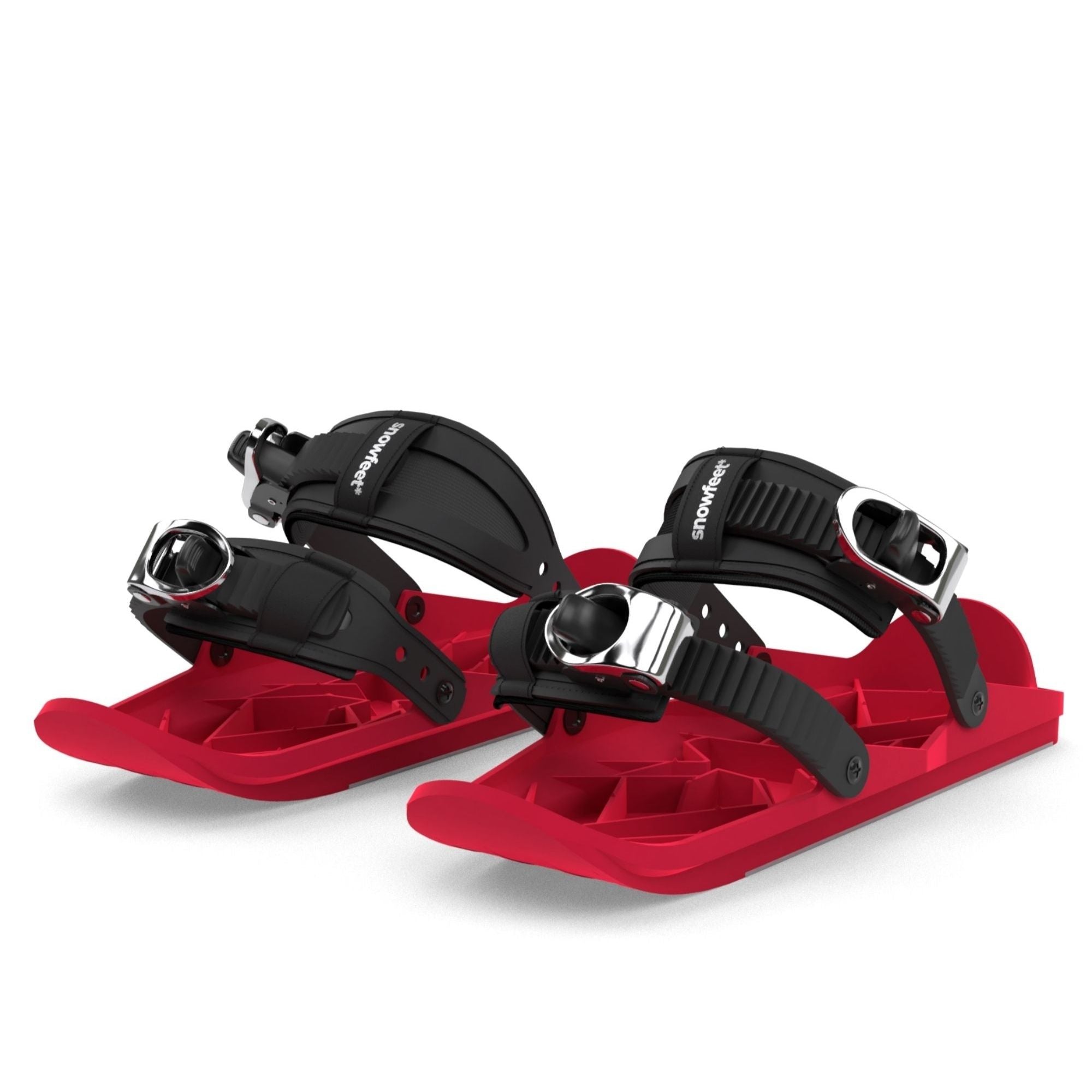
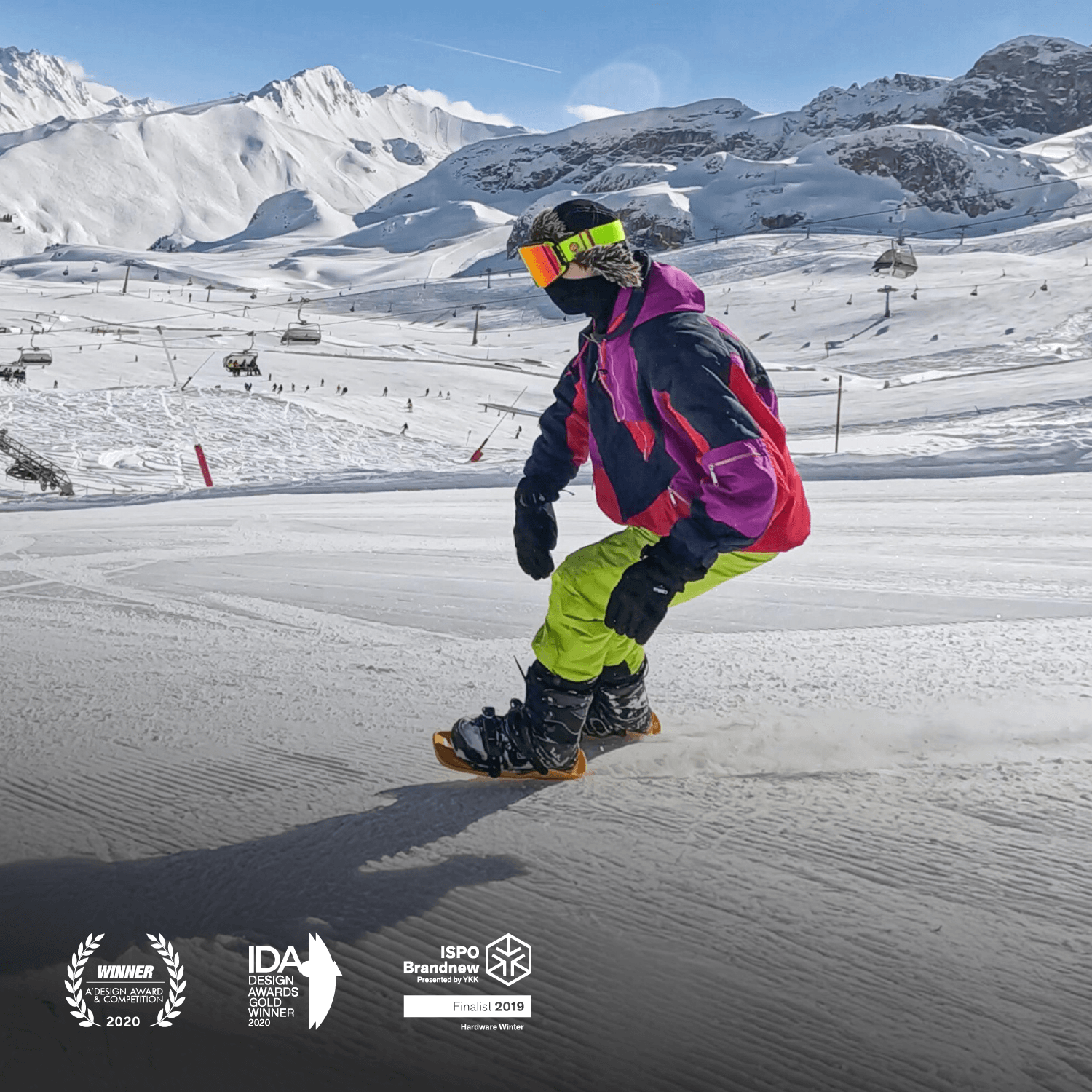


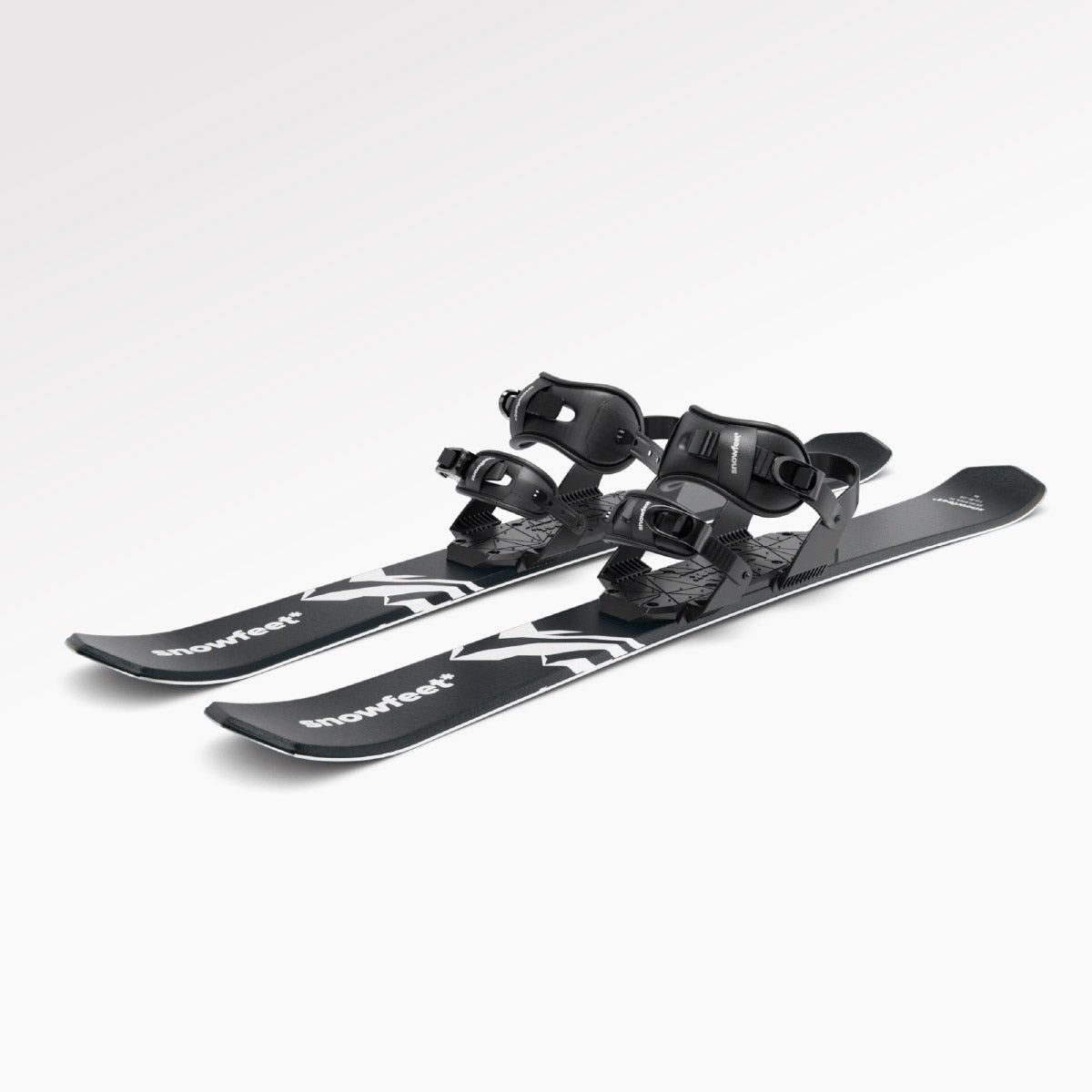
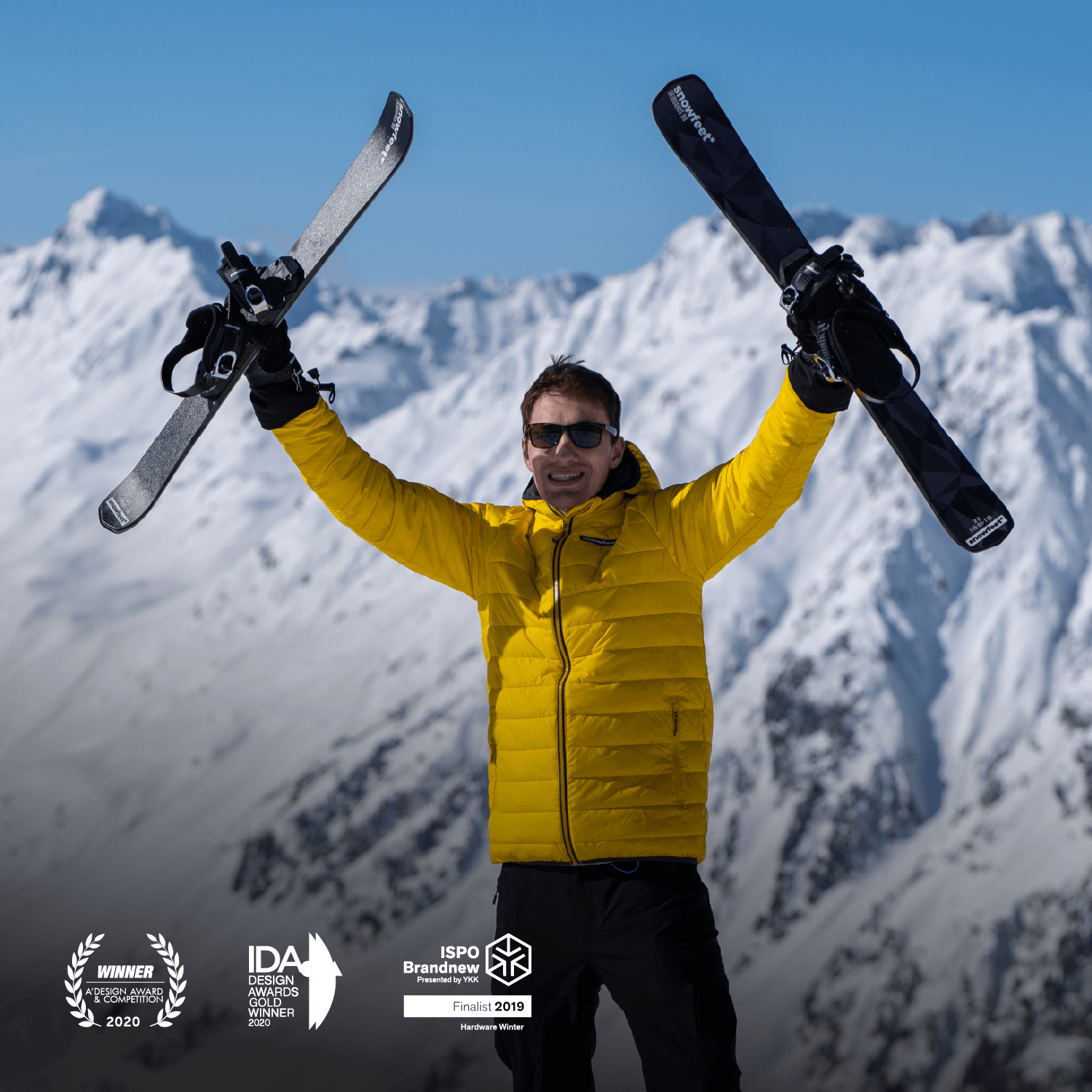
コメントを残す
このサイトはhCaptchaによって保護されており、hCaptchaプライバシーポリシーおよび利用規約が適用されます。